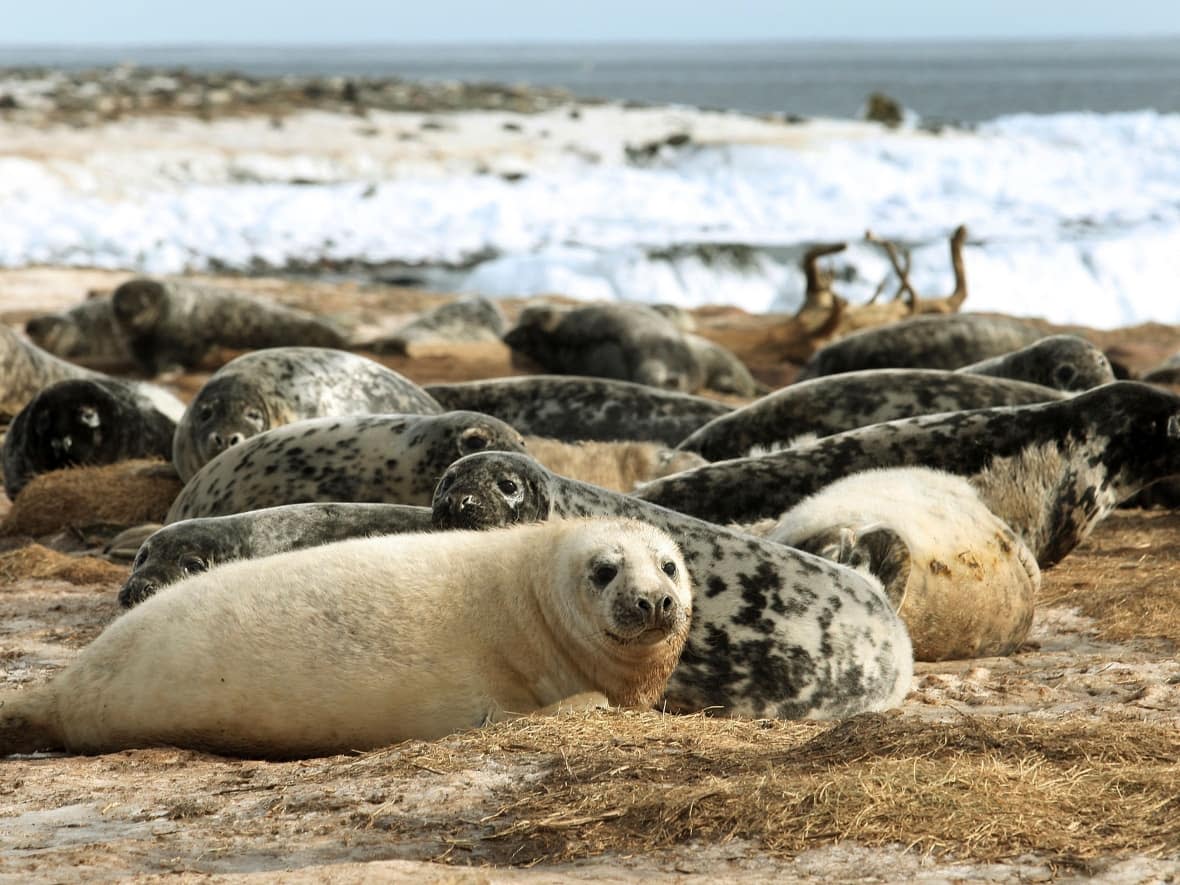Grey seals eat into another fish population in the Gulf of St. Lawrence

Grey seals are eating into another fish species in the southern Gulf of St. Lawrence, driving a serious decline in the abundance of yellowtail flounder, according to a new report from Fisheries and Oceans Canada (DFO).
Federal scientists assessed the flatfish species in the southern gulf over the past 25 years up to 2020 and projected the population to 2030.
The results are stark.
The number of yellowtail flounder six-years and older is believed to have declined by 95 per cent since the mid-1980s.
There is a 100 per cent probability the population will remain in the critical zone where serious harm occurs whatever the level of commercial fishing, the report says.
"This strong and ongoing decline in the abundance of large individuals represents a severe risk to this population. The cause of this decline appears to be the extreme increase in natural mortality estimated to have occurred among the larger individuals in this population," the report stated.
Growing grey seal population
The assessment points the finger at grey seals, whose numbers have been growing.
The department estimates there are 56,000 grey seals in the gulf.
"Predation by grey seals appears to be an important cause of this elevated mortality [for yellowtail flounder]," it said.
DFO scientists have reported on the impact of grey seals on fish populations in the area before.
"Similar elevated natural mortality is widespread among large individuals of many fish species in the southern Gulf of St. Lawrence. There is evidence that predation by grey seals is an important cause of this elevated mortality," the report stated.
A 2019 assessment predicted local extinction of cod in the southern Gulf given the "extremely high" and "unsustainable" death rate for cod five years or older.
"At the current abundance of grey seals in this ecosystem, recovery of this cod population does not appear to be possible, and its extinction is highly probable," the report said.
Yellowtail flounder
DFO recently posted the status report on yellowtail flounder.
It also says population dynamics have shifted dramatically over the past 25 years.
The spawning stock — the age where fish can reproduce — has changed from one dominated by fish aged seven years and older to one now composed almost entirely of fish four years and younger, the assessment says.
Earlier maturation is the expected outcome when more and more older fish die.
MORE TOP STORIES


